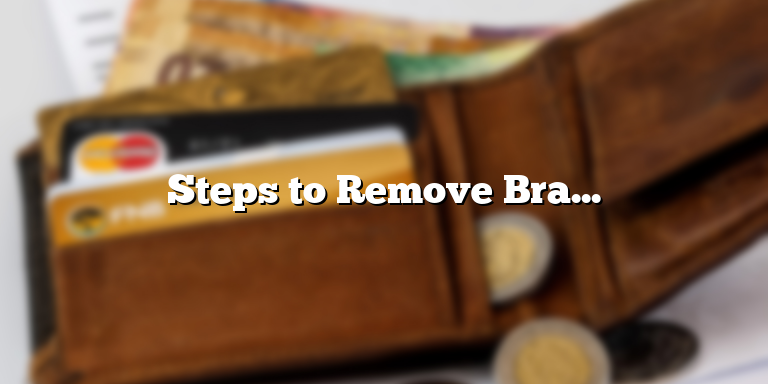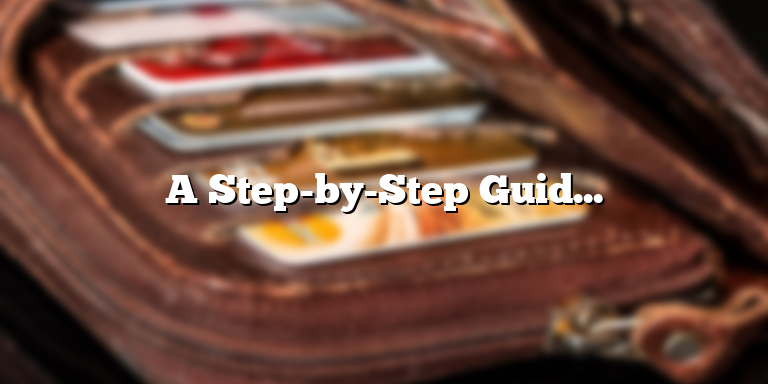
Preparing for Braces Removal
Getting your braces off is an exciting moment in your orthodontic journey. However, it’s important to prepare for the removal process to ensure that everything goes smoothly. Here are a few steps you can take to get ready for braces removal.
Schedule an Appointment
The first step in preparing for braces removal is scheduling an appointment with your orthodontist. This will give you an opportunity to discuss the removal process and ask any questions you may have. During the appointment, your orthodontist will examine your teeth and determine if there are any last-minute adjustments that need to be made before your braces can be removed.
Clean Your Teeth Thoroughly
It’s important to brush and floss your teeth thoroughly before your braces removal appointment. This will help ensure that your teeth are as clean as possible, which can make the removal process easier. Use a soft-bristled toothbrush and fluoride toothpaste to gently clean each tooth. Don’t forget to floss between each tooth and around your brackets to remove any trapped food particles and plaque.
Wear Comfortable Clothing
Braces removal can take anywhere from 30 minutes to an hour, so make sure you wear comfortable clothing to your appointment. Avoid wearing anything that is too tight or restrictive, as you may be sitting in the dentist’s chair for an extended period of time.
Mentally Prepare Yourself
If you’re feeling anxious or nervous about getting your braces off, take some time to mentally prepare yourself before your appointment. Remember that braces removal is a painless procedure, and your orthodontist will take all necessary precautions to ensure that your teeth and gums are not damaged during the process. You may feel some pressure or discomfort as the brackets and wires are removed, but this is perfectly normal.
Be Prepared for the Aftermath
Once your braces are off, your orthodontist will clean any remaining adhesive off your teeth and take impressions for your retainer. You may experience some sensitivity or soreness in your teeth and gums after the removal process, so be prepared to take it easy for a few days. Stick to soft foods and avoid anything too crunchy or hard that could cause discomfort. You’ll also need to wear your retainer as directed to ensure that your teeth don’t shift back into their old positions.
Following these steps can help ensure a smooth and comfortable braces removal process. Remember to follow your orthodontist’s instructions and take care of your teeth and gums after your braces are off to maintain your beautiful smile.
The Braces Removal Process
After months or even years of wearing braces, the day finally comes when it’s time to have them removed. While the process of removing braces is a major milestone in the orthodontic journey, it can also be a bit intimidating for patients who aren’t quite sure what to expect. Here’s a step-by-step breakdown of the braces removal process:
Step 1: Removing the Brackets
The first step in removing your braces is to remove the brackets. Your orthodontist will use special pliers to carefully pry off each bracket from your teeth. While this process may feel a bit uncomfortable or even slightly painful, it typically takes only a few seconds per bracket.
Step 2: Removing the Adhesive
Once the brackets are removed, your orthodontist will need to remove the adhesive that was used to bond them to your teeth. This is done by using a special tool to scrape off the adhesive. While the process of removing the adhesive isn’t painful, it can take several minutes per tooth to ensure that all of the adhesive is removed.
If there is any residual adhesive that couldn’t be removed by scraping, your orthodontist will use a special adhesive remover to dissolve it. This is usually done after all the scraping is complete and it only takes a few minutes for the adhesive to dissolve.
Step 3: Removing the Archwires
Once the brackets and adhesive have been removed, your orthodontist will remove the archwires. This is done by gently and carefully loosening each bracket on either end of the wire and sliding the wire out of each bracket. This process usually only takes a few minutes to complete and is painless.
Step 4: Polishing the Teeth
After all the brackets and wires have been removed, your orthodontist will polish your teeth to remove any remaining adhesive or bonding material. This step is important as it ensures that your teeth are smooth and clean after the braces removal process.
Overall, the braces removal process is a simple and straightforward procedure that usually takes less than an hour to complete. While it’s normal to feel a bit anxious or nervous about having your braces removed, your orthodontist will guide you through the process and ensure that it’s as pain-free and comfortable as possible.
If you have any concerns about the braces removal process, be sure to ask your orthodontist for more information. They will be more than happy to answer your questions and make sure that you feel comfortable and informed every step of the way.
Removing Adhesive Residue
After your braces have been removed, you may notice some residual adhesive left on your teeth. While this adhesive is harmless, it can be a nuisance and may cause your teeth to feel rough or gritty. Removing this residue is a relatively simple process that can be done at home, but it’s important to proceed with caution to avoid damaging your teeth. Here’s how to safely and effectively remove adhesive residue from your teeth:
Gather Your Supplies
Before you begin, you’ll need a few items to help you remove the adhesive from your teeth. Gather together a soft-bristled toothbrush, some dental floss, and some dental adhesive remover. You can find dental adhesive remover at most drugstores or online, and it comes in a small tube or bottle. If you’re unable to find dental adhesive remover, you can use pure acetone or rubbing alcohol as an alternative.
Brush and Floss Your Teeth
The first step in removing adhesive residue is to thoroughly brush and floss your teeth. Use a soft-bristled toothbrush and fluoride toothpaste to brush your teeth gently, paying extra attention to the areas where the adhesive was located. After brushing, use dental floss to clean between your teeth and around the brackets of your braces. This will help to remove any adhesive that may be stuck between your teeth or under your braces.
Apply Dental Adhesive Remover
Next, apply a small amount of dental adhesive remover to a cotton swab or gauze pad. Gently rub the remover onto the adhesive residue, being careful not to scrub too hard or put too much pressure on your teeth. Allow the remover to sit on your teeth for a few minutes to help dissolve the adhesive.
Rinse Your Mouth and Repeat
After the dental adhesive remover has had a chance to work, rinse your mouth thoroughly with water. Use a soft-bristled toothbrush to gently brush your teeth again, paying extra attention to the areas where the adhesive residue was located. If there is still adhesive remaining on your teeth, you can repeat the process of applying adhesive remover and gently rubbing it onto your teeth until the adhesive is fully removed.
Visit your Orthodontist if needed
If you find that you are unable to remove the adhesive on your own, it’s important to contact your orthodontist and schedule a follow-up appointment. Your orthodontist has special tools and techniques that can be used to safely and effectively remove any remaining adhesive from your teeth and ensure that your teeth are left feeling smooth and clean.
In conclusion, removing adhesive residue from your teeth after braces have been removed is a relatively easy process that can be done safely at home. By using the right tools and techniques, you can ensure that your teeth are left feeling smooth and clean once your braces are removed.
Post-Braces Follow-Up
After going through the long and sometimes painful process of wearing braces, you might think that your journey is over once they come off. However, this is not the case. Your orthodontist will schedule a follow-up appointment to ensure that your teeth remain in their correct positions. This is the last step in the braces journey and it’s important that you don’t miss it!
During your follow-up appointment, your orthodontist will examine your teeth to ensure that they have stayed in their correct position. They will also check to see if your bite has changed and may recommend additional treatment if necessary. This appointment typically lasts between 30 minutes to an hour.
It’s essential that you attend this follow-up appointment, even if you think that your teeth have remained in their correct position. Missing this appointment could result in your teeth moving back into their incorrect positions, which would require additional treatment.
Your orthodontist will provide you with a retainer after the removal of your braces. The retainer is a custom device that keeps your teeth in position, and it needs to be worn for several months after your braces are removed.
The retainer will ensure that your teeth don’t move back into their incorrect positions while your teeth are still settling into their new positions. The orthodontist will provide you with instructions on how to take care of the retainer, how often to wear it, and when to remove it. It’s important to follow these instructions carefully to ensure that your teeth remain in their correct positions.
Your orthodontist may recommend additional treatments like a permanent retainer, which is an unseen wire that remains on your teeth to ensure that they stay in place. This type of retainer is typically used when the teeth are particularly susceptible to shifting back after the braces are removed.
In conclusion, the post-braces follow-up appointment is a crucial step in ensuring that your teeth remain in their correct position. Don’t skip this appointment and follow the instructions provided by your orthodontist to ensure that your teeth remain healthy, strong, and beautiful.
Maintaining Your Teeth After Braces Removal
For many people, braces have been part of their lives for years. They have become accustomed to the routine of regular visits to the orthodontist, adjustments to their braces, and the restrictions on what they can eat. However, when the braces finally come off, it can be an exciting and liberating experience. At the same time, it’s important to understand that the work doesn’t stop once the braces are removed. There are steps you have to take to maintain the results of your orthodontic treatment. Here are some things to keep in mind when it comes to maintaining your teeth after braces removal.
Wearing Your Retainer
One of the most important things you can do after your braces are removed is wearing your retainer as directed by your orthodontist. Your teeth will be susceptible to shifting after the braces come off, and your retainer helps to stabilize them in their new positions. Your orthodontist will tell you how long you need to wear your retainer each day and how often you need to come in for checkups. Make sure to follow their instructions carefully to maintain the results of your orthodontic treatment.
Cleaning Your Teeth
Another important part of maintaining your teeth after braces removal is good oral hygiene. This means brushing and flossing regularly to keep your teeth and gums healthy. While you had braces, it was important to take extra care when brushing and flossing to avoid damaging your braces. Now that the braces are gone, you can return to your regular dental routine. Use a soft-bristled toothbrush and fluoride toothpaste to brush your teeth at least twice a day. Floss at least once a day to remove food particles and plaque from between your teeth. Remember, good oral hygiene habits are essential for maintaining healthy teeth and gums.
Monitoring Your Teeth
After braces removal, it’s essential to keep an eye on your teeth. Be aware of any changes to the position of your teeth, and contact your orthodontist if you notice that they are shifting out of place. It’s also a good idea to keep track of any discomfort or pain you may experience after braces removal. While it’s normal to have some discomfort as your teeth adjust to their new positions, persistent pain or discomfort may be a sign that something is wrong. Don’t hesitate to contact your orthodontist if you have any concerns.
Maintaining a Healthy Diet
Another important aspect of maintaining your teeth after braces removal is watching what you eat. While you had braces, there were foods you had to avoid or cut back on. Now that your braces are off, you may be tempted to indulge in some of those foods you missed. However, it’s important to maintain a healthy diet to keep your teeth and gums healthy. Eating a balanced diet with plenty of fruits, vegetables, and lean protein will keep your body and teeth healthy.
Keeping Up with Regular Dental Checkups
Finally, don’t forget about the importance of regular dental checkups. Even after your orthodontic treatment is complete, it’s still important to see your dentist at least twice a year for cleanings and checkups. Your dentist can help you maintain good oral hygiene habits and keep an eye on any changes to your teeth and gums. Don’t skip your dental appointments or put them off for too long, as this can lead to more serious dental problems down the line.
By following these tips, you can maintain the results of your orthodontic treatment and enjoy a healthy, beautiful smile for years to come.






